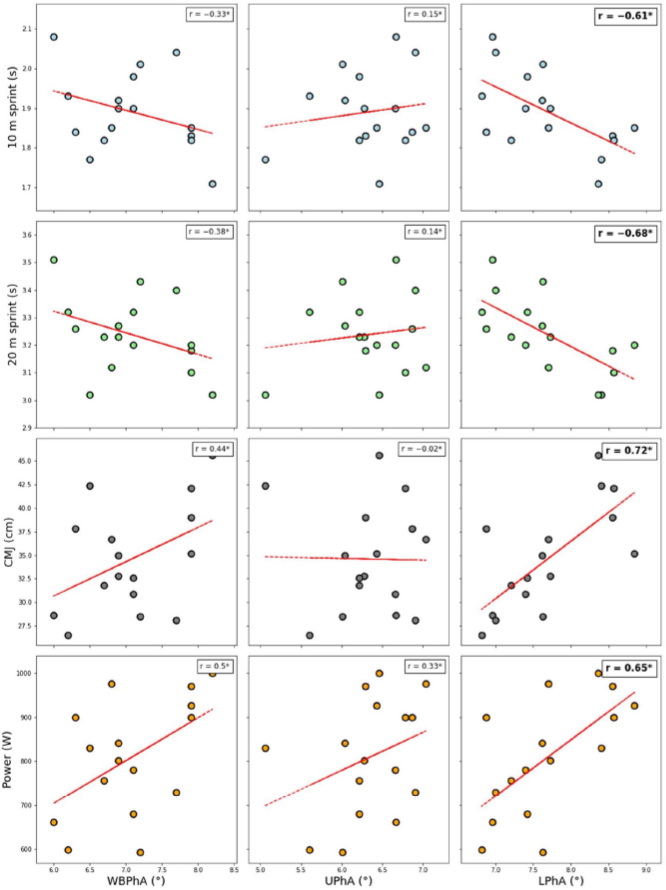Regional Bioelectrical Phase Angle Is More Informative than Whole-Body Phase Angle for Monitoring Neuromuscular Performance: A Pilot Study in Elite Young Soccer Players
An accurate estimate of athletes’ body composition may vary in accordance with the different assessment techniques used.
Even if laboratory testing methods are the most accurate, they are time consuming, expensive and might expose athletes to unnecessary radiation, albeit being harmless, which make their day-to-day use unfeasible. Conversely, even if field-based methods or equipment to assess body composition presents less accuracy, they are accessible, easy to use, minimally invasive, and cost effective (e.g.,bioelectrical-impedance analysis, BIA) with a more feasible day-to-day use compared with laboratory methods.
Among these techniques, BIA represents a more affordable and convenient method of estimating body composition by measuring raw parameters such as resistance, reactance, and phase angle (PhA). This technique involves the application of a weak alternating current throughout the body, with surface-contact electrodes placed on the foot and hand.
The electrical conduction in the body is related to the water and electrolyte distribution. Besides the raw bioelectrical parameters, PhA has been suggested to be a biomarker of cellular health and cell-membrane integrity [9] and descriptive of the intracellular/extracellular water ratio. Thanks to these features, BIA-based assessment of PhA has been widely used among both the general population and athletes in recent years.
The study of Bongiovanni et al (2022) [1] revealed that monitoring regional PhA is more informative than total PhA on sprint and vertical-jump performance in elite young soccer players. These results confirm the promising use of regional Lower limb PhA to monitor regularly, non-invasively and effectively neuromuscular performance of lower-body segments, which are physically taxed in soccer.

Figure 1. Correlation analysis between lower-body neuromuscular performance (CMJ height and power, 10 m and 20 m sprint) and BIA parameters (WBPhA, UPhA, LPhA). Note: CMJ = countermovement jump, WBPhA = whole-body phase angle, UPhA = upper-hemisome phase angle, LPhA = lower-hemisome phase angle. * Significant (p < 0.05) correlation.
Author:
Alessio Rossi, UNIPI
Exploratory:
Sport data science
Sustainable Goal:
Good health and well-being
Item in the Catalogue:
https://data.d4science.org/ctlg/ResourceCatalogue/regional_bioelectrical_phase_angle_is_more_informative_than_whole-body_phase_angle_for_monitoring_n
References
[1] Bongiovanni, T.; Rossi, A.; Trecroci, A.; Martera, G.; Iaia, F.M.; Alberti, G.; Pasta, G.; Lacome, M. Regional Bioelectrical Phase Angle Is More Informative than Whole-Body Phase Angle for Monitoring Neuromuscular Performance: A Pilot Study in Elite Young Soccer Players. Sports 2022, 10, 66. https://doi.org/10.3390/sports10050066

